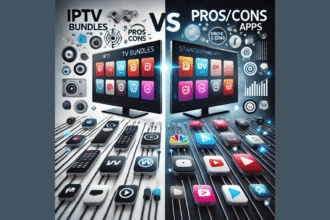When it comes to choosing a data analytics tool, Power BI and Tableau are often at the center of discussions. Both are leading platforms in the world of business intelligence, offering powerful features to help organizations turn raw data into actionable insights.
But how do they stack up against each other, especially in terms of pricing?
If you’re trying to decide between the two, this deep dive into Power BI pricing vs Tableau might help you make a more informed decision.
What is Power BI?
Power BI, created by Microsoft, turns data into easy-to-understand visuals. It plays well with Excel, Azure, and other Microsoft tools, making it a top pick for businesses already in the Microsoft ecosystem. With its user-friendly design, it’s perfect for small to mid-sized teams looking to share insights quickly and easily.
What is Tableau?
Tableau is the go-to tool for complex data visualizations. It lets you build interactive, stunning dashboards that dive deep into analytics. While Power BI is great for basic reporting, Tableau shines when you need in-depth, high-powered data exploration. It’s a favorite among large enterprises with more advanced analytics needs.
How Much Does Power BI Cost? A Detailed Pricing Guide
Power BI offers a pricing structure that appeals to a wide range of users, from individuals to large organizations. Here’s what you need to know:
-
Power BI Desktop – Free
Power BI Desktop allows users to create detailed reports and dashboards locally. If you’re working solo or with a small team, this version is an easy starting point—no strings attached. But here’s the catch: it’s designed for individuals and doesn’t offer collaboration features, so it’s a non-starter for larger teams that need to share insights in real time.
-
Power BI Pro – $9.99 per user/month
The Pro version brings collaboration into play. For under $10 a month per user, you get the ability to publish, share, and collaborate on reports across your organization. This is the sweet spot for many smaller businesses or teams looking for a robust, cost-effective solution to share data and collaborate on insights.
-
Power BI Premium – Starting at $20 per user/month
For large enterprises or teams with advanced data needs, Power BI Premium offers additional capacity, including more storage, faster refresh rates, and enhanced AI capabilities. Premium also supports larger datasets, which makes it an appealing choice for organizations that require top-tier performance for their data-driven decision-making.
Tableau Pricing Breakdown: What You Need to Know
Tableau, while similarly capable, follows a different pricing approach. It’s widely regarded as a top-tier tool for those looking to dive deep into data analysis and visualization. Here’s a breakdown of what you’ll find:
-
Tableau Public – Free
This version is limited. It allows you to create visualizations and share them publicly, but it’s not suitable for confidential or private data. It’s a great option for individuals or businesses looking to showcase non-sensitive data but not much more.
-
Tableau Creator – $70 per user/month
Tableau Creator is the full package. At $70 per user, it provides complete access to Tableau’s desktop app, allowing you to build robust visualizations and connect to a wide range of data sources. For those already well-versed in data analytics and looking for advanced features, this is the go-to plan. But at that price point, is it really worth it for your use case?
-
Tableau Explorer – $42 per user/month
Tableau Explorer is a middle-ground option, designed for those who need to interact with dashboards and perform simple analyses but don’t need full access to the creation features. This can be a good choice for business analysts or decision-makers who only need access to the insights rather than the creation of those insights.
-
Tableau Viewer – $12 per user/month
If you don’t need to create or interact deeply with the data, but only need to view dashboards, Tableau Viewer is the most affordable option. It’s perfect for executives or other stakeholders who just need to view reports and visualizations without delving into data manipulation.
-
Tableau Server/Online – Starting at $35 per user/month
For organizations with larger teams or complex data sharing requirements, Tableau Server or Tableau Online offers centralized hosting options. These plans are ideal for enterprises needing scalable deployment solutions for team-wide collaboration and insights.
Key Differences in Pricing
So, where do the two platforms differ in terms of cost?
- Affordability: Power BI’s pricing is a clear advantage for smaller teams or companies. With Power BI Pro costing only $9.99 per user/month, it’s a no-brainer for teams working with Microsoft tools who want to keep costs down.
- Advanced Capabilities: Tableau, on the other hand, is priced higher because it offers more advanced features. If your team relies heavily on complex visualizations, deep data exploration, and sophisticated analytics, then the additional investment might be justified.
- Enterprise Solutions: Both platforms offer enterprise solutions. Power BI Premium’s $20 per user/month or $4,995 per month for larger teams is much more cost-effective than Tableau’s enterprise-level options, particularly when you compare the storage and performance benefits in each tool’s pricing tier.
Power BI vs Tableau: Which One Should You Choose?
At the end of the day, it comes down to the needs of your business and how much you’re willing to invest in your analytics platform.
When to Choose Power BI?
Power BI is an excellent choice if you’re looking for something that’s highly cost-effective without compromising on the core features needed for good data analysis. It’s especially appealing to businesses already within the Microsoft ecosystem, as its integration with tools like Excel, Azure, and Office 365 is seamless.
Best for:
- Small to medium-sized teams with modest analytics budgets
- Organizations already invested in Microsoft products
- Businesses looking for a straightforward, affordable analytics solution
When to Choose Tableau?
Tableau is the choice for businesses that prioritize top-tier data visualizations and more advanced analytics. It excels when you need highly interactive dashboards, real-time analysis, and the ability to handle complex datasets. If your organization’s decision-making is driven by intricate data exploration, Tableau’s premium features are hard to beat.
Best for:
- Large enterprises with complex data needs
- Teams that require high-level analytics and visualization capabilities
- Companies with bigger budgets for enterprise-grade tools
Final Thoughts: Power BI Pricing vs Tableau
Choosing between Power BI pricing vs Tableau depends on your needs. Power BI offers great value for basic functionality, while Tableau excels at advanced visualizations and analytics—at a higher cost.
Looking for a budget-friendly option? INSIA centralizes your data, simplifies reporting, and helps you make smarter decisions—without the hefty price tag. Whether in manufacturing, finance, or healthcare, INSIA is a cost-effective way to manage and analyze your data.
Book a demo tour with Insia today and tap into the future of data analytics.
















